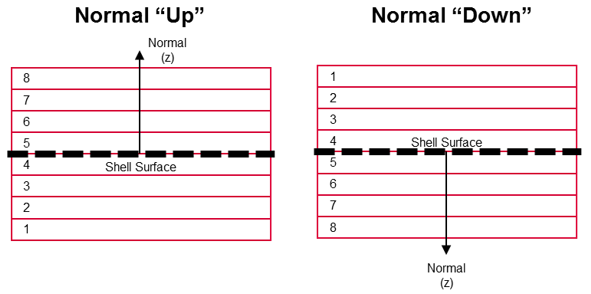Stack Direction
Stacking direction of plies in a laminate.
The stacking direction of plies in a laminate is determined by element normals for both ply-based and zone-based models. Element normals can be set from either the or panels.

Figure 3.
Stacking direction of plies in a laminate.
The stacking direction of plies in a laminate is determined by element normals for both ply-based and zone-based models. Element normals can be set from either the or panels.
